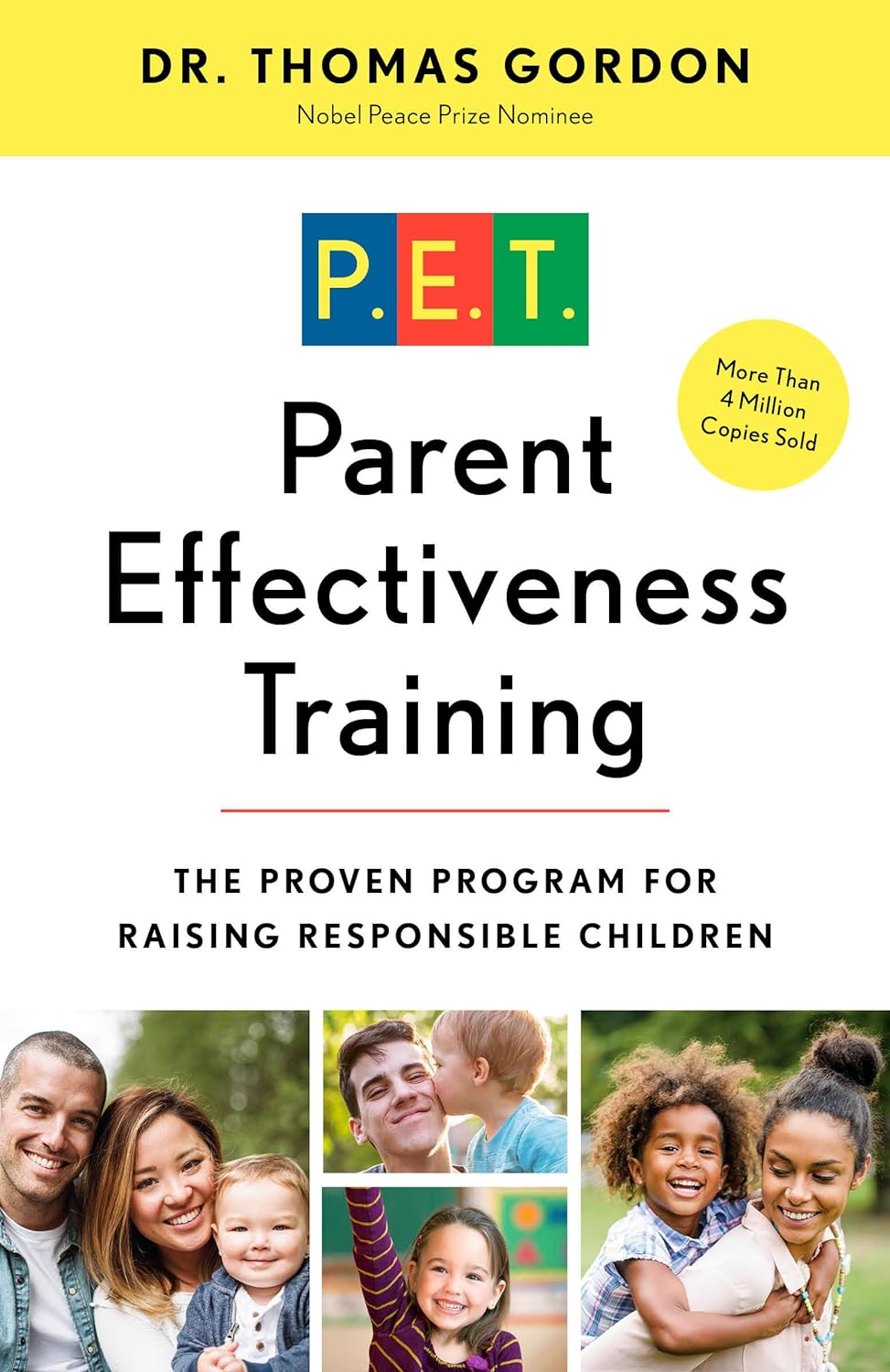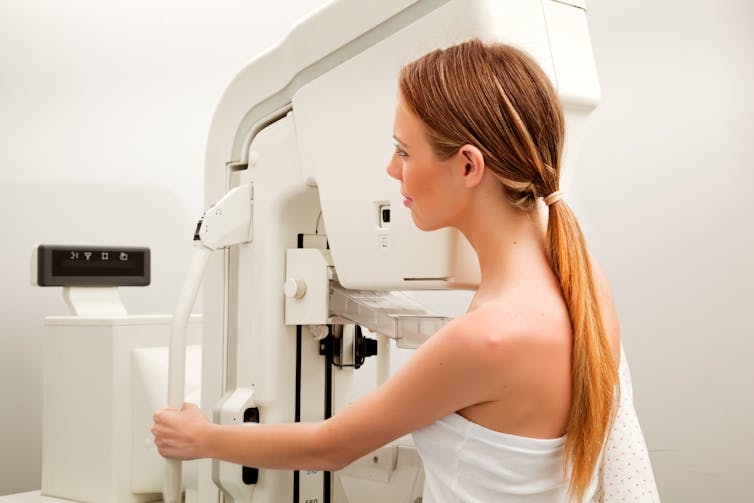
Which Magnesium? (And: When?)
10almonds is reader-supported. We may, at no cost to you, receive a portion of sales if you purchase a product through a link in this article.
It’s Q&A Day at 10almonds!
Have a question or a request? We love to hear from you!
In cases where we’ve already covered something, we might link to what we wrote before, but will always be happy to revisit any of our topics again in the future too—there’s always more to say!
As ever: if the question/request can be answered briefly, we’ll do it here in our Q&A Thursday edition. If not, we’ll make a main feature of it shortly afterwards!
So, no question/request too big or small
❝Good morning! I have been waiting for this day to ask: the magnesium in my calcium supplement is neither of the two versions you mentioned in a recent email newsletter. Is this a good type of magnesium and is it efficiently bioavailable in this composition? I also take magnesium that says it is elemental (oxide, gluconate, and lactate). Are these absorbable and useful in these sources? I am not interested in taking things if they aren’t helping me or making me healthier. Thank you for your wonderful, informative newsletter. It’s so nice to get non-biased information❞
Thank you for the kind words! We certainly do our best.
For reference: the attached image showed a supplement containing “Magnesium (as Magnesium Oxide & AlgaeCal® l.superpositum)”
Also for reference: the two versions we compared head-to-head were these very good options:
Magnesium Glycinate vs Magnesium Citrate – Which is Healthier?
Let’s first borrow from the above, where we mentioned: magnesium oxide is probably the most widely-sold magnesium supplement because it’s cheapest to make. It also has woeful bioavailability, to the point that there seems to be negligible benefit to taking it. So we don’t recommend that.
As for magnesium gluconate and magnesium lactate:
- Magnesium lactate has very good bioavailability and in cases where people have problems with other types (e.g. gastrointestinal side effects), this will probably not trigger those.
- Magnesium gluconate has excellent bioavailability, probably coming second only to magnesium glycinate.
The “AlgaeCal® l.superpositum” supplement is a little opaque (and we did ntoice they didn’t specify what percentage of the magnesium is magnesium oxide, and what percentage is from the algae, meaning it could be a 99:1 ratio split, just so that they can claim it’s in there), but we can say Lithothamnion superpositum is indeed an algae and magnesium from green things is usually good.
Except…
It’s generally best not to take magnesium and calcium together (as that supplement contains). While they do work synergistically once absorbed, they compete for absorption first so it’s best to take them separately. Because of magnesium’s sleep-improving qualities, many people take calcium in the morning, and magnesium in the evening, for this reason.
Some previous articles you might enjoy meanwhile:
- Pinpointing The Usefulness Of Acupuncture
- Science-Based Alternative Pain Relief
- Peripheral Neuropathy: How To Avoid It, Manage It, Treat It
- What Does Lion’s Mane Actually Do, Anyway?
Take care!
Don’t Forget…
Did you arrive here from our newsletter? Don’t forget to return to the email to continue learning!
Recommended
Learn to Age Gracefully
Join the 98k+ American women taking control of their health & aging with our 100% free (and fun!) daily emails:
-
Mediterranean Diet Book Suggestions
10almonds is reader-supported. We may, at no cost to you, receive a portion of sales if you purchase a product through a link in this article.
It’s Q&A Day at 10almonds!
Have a question or a request? You can always hit “reply” to any of our emails, or use the feedback widget at the bottom!
In cases where we’ve already covered something, we might link to what we wrote before, but will always be happy to revisit any of our topics again in the future too—there’s always more to say!
As ever: if the question/request can be answered briefly, we’ll do it here in our Q&A Thursday edition. If not, we’ll make a main feature of it shortly afterwards!
So, no question/request too big or small
❝What is Mediterranean diet which book to read?❞
We did a special edition about the Mediterranean Diet! So that’s a great starting point.
As to books, there are so many, and we review books about it from time to time, so keep an eye out for our daily “One-Minute Book Review” section. We do highly recommend “How Not To Die”, which is a science-heavy approach to diet-based longevity, and essentially describes the Mediterranean Diet, with some tweaks.
Share This Post
-
Parent Effectiveness Training – by Dr. Thomas Gordon
10almonds is reader-supported. We may, at no cost to you, receive a portion of sales if you purchase a product through a link in this article.
Do you want your home (or workplace, for that matter) to be a place of peace? This book literally got the author nominated for a Nobel Peace Prize. Can’t really get much higher praise than that.
The title is “Parent Effectiveness Training”, but in reality, the advice in the book is applicable to all manner of relationships, including:
- romantic relationships
- friends
- colleagues
- …and really any human interaction.
It covers some of the same topics we did today (and more) in much more detail than we ever could in a newsletter. It lays out formulae to use, gives plenty of examples, and/but is free from undue padding.
- Pros: this isn’t one of those “should have been an article” books. It has so much valuable content.
- Cons: It is from the 1970s* so examples may feel “dated” now.
In addition to going into much more detail on some of the topics covered in today’s issue of 10almonds, Dr. Gordon also talks in-depth about the concept of “problem-ownership”.
In a nutshell, that means: whose problem is a given thing? Who “has” what problem? Everyone needs to be on the same page about everyone else’s problems in the situation… as well as their own, which is not always a given!
Dr. Gordon presents, in short, tools not just to resolve conflict, but also to pre-empt it entirely. With these techniques, we can identify and deal with problems (together!) well before they arise.
Everybody wins.
Get your copy of “Parent Effectiveness Training” from Amazon today!
*Note: There is an updated edition on the market, and that’s what you’ll find upon following the above link. This reviewer (hi!) has a battered old paperback from the 1970s and cannot speak for what was changed in the new edition. However: if the 70s one is worth more than its weight in gold (and it is), the new edition is surely just as good, if not better!
Share This Post
-
Breakfasting For Health?
10almonds is reader-supported. We may, at no cost to you, receive a portion of sales if you purchase a product through a link in this article.
Breakfast Time!
In yesterday’s newsletter, we asked you for your health-related opinions on the timings of meals.
But what does the science say?
Quick recap on intermittent fasting first:
Today’s article will rely somewhat on at least a basic knowledge of intermittent fasting, what it is, and how and why it works.
Armed with that knowledge, we can look at when it is good to break the fast (i.e. breakfast) and when it is good to begin the fast (i.e. eat the last meal of the day).
So, if you’d like a quick refresher on intermittent fasting, here it is:
Intermittent Fasting: We Sort The Science From The Hype
And now, onwards!
One should eat breakfast first thing: True or False?
True! Give or take one’s definition of “first thing”. We did a main feature about this previously, and you can read a lot about the science of it, and see links to studies:
The Circadian Rhythm: Far More Than Most People Know
In case you don’t have time to read that now, we’ll summarize the most relevant-to-today’s-article conclusion:
The optimal time to breakfast is around 10am (this is based on getting sunlight around 8:30am, so adjust if this is different for you)
It doesn’t matter when we eat; calories are calories & nutrients are nutrients: True or False?
Broadly False, for practical purposes. Because, indeed calories are calories and nutrients are nutrients at any hour, but the body will do different things with them depending on where we are in the circadian cycle.
For example, this study in the Journal of Nutrition found…
❝Our results suggest that in relatively healthy adults, eating less frequently, no snacking, consuming breakfast, and eating the largest meal in the morning may be effective methods for preventing long-term weight gain.
Eating breakfast and lunch 5-6 h apart and making the overnight fast last 18-19 h may be a useful practical strategy.❞
Read in full: Meal Frequency and Timing Are Associated with Changes in Body Mass Index
We should avoid eating too late at night: True or False?
False per se, True in the context of the above. Allow us to clarify:
There is nothing inherently bad about eating late at night; there is no “bonus calorie happy hour” before bed.
However…
If we are eating late at night, that makes it difficult to breakfast in the morning (as is ideal) and still maintain a >16hr fasting window as is optimal, per:
❝the effects of the main forms of fasting, activating the metabolic switch from glucose to fat and ketones (G-to-K), starting 12-16 h after cessation or strong reduction of food intake❞
~ Dr. Françoise Wilhelmi de Toledo et al.
So in other words: since the benefits of intermittent fasting start at 12 hours into the fast, you’re not going to get them if you’re breakfasting at 10am and also eating in the evening.
Summary:
- It is best to eat breakfast around 10am, generally (ideally after some sunlight and exercise)
- While there’s nothing wrong with eating in the evening per se, doing so means that a 10am breakfast will eliminate any fasting benefits you might otherwise get
- If a “one meal a day, and that meal is breakfast” lifestyle doesn’t suit you, then one possible good compromise is to have a large breakfast, and then a smaller meal in the late afternoon / early evening.
One last tip: the above is good, science-based information. Use it (or don’t), as you see fit. We’re not the boss of you:
- Maybe you care most about getting the best circadian rhythm benefits, in which case, prioritizing breakfast being a) in the morning and b) the largest meal of the day, is key
- Maybe you care most about getting the best intermittent fasting benefits, in which case, for many people’s lifestyle, a fine option is skipping eating in the morning, and having one meal in the late afternoon / early evening.
Take care!
Share This Post
Related Posts
-
The Only Exercise You Need To Strengthen Every Hip Muscle (Ages 50+)
10almonds is reader-supported. We may, at no cost to you, receive a portion of sales if you purchase a product through a link in this article.
One exercise, no equipment, and easy to do without even getting changed:
You may be on the fence about this one
Standing on one leg is great, of course, and then…
Basic exercise:
- Imagine stepping over an electric fence side to side.
- Lift each leg high but slowly to engage hip muscles.
- Adjust the height and speed based on ease/difficulty.
Variations:
- Step over an imaginary side fence.
- Step over an imaginary front fence.
- Step sideways in the opposite direction.
- Step backward to complete a square.
- Ensure both legs are worked evenly.
As a bonus, it also improves balance!
For more on all this plus visual demonstrations, enjoy:
Click Here If The Embedded Video Doesn’t Load Automatically!
Want to learn more?
You might also like:
How Tight Are Your Hips? Test (And Fix!) With This
Take care!
Don’t Forget…
Did you arrive here from our newsletter? Don’t forget to return to the email to continue learning!
Learn to Age Gracefully
Join the 98k+ American women taking control of their health & aging with our 100% free (and fun!) daily emails:
-
Tiramisu Crunch Bites
10almonds is reader-supported. We may, at no cost to you, receive a portion of sales if you purchase a product through a link in this article.
It’s coffee, it’s creamy, it’s nutty, it’s chocolatey, what’s not to love? It has all the well-loved flavors of tiramisu, but this recipe is a simple one, and it’s essentially stuffed dates in a way you’ve never had them before. They’re delectable, decadent, and decidedly good for your health. These things are little nutrient-bombs that’ll keep you reaching for more.
You will need
- Coffee (we will discuss this)
- 150g (5.5oz) mascarpone (if vegan or lactose-intolerant, can be substituted with vegan varieties, or at a pinch, pressed silken tofu)
- 500g (1lb) dates (Medjool are ideal)
- Twice as many almonds as you have dates
- 50g (2oz) dark chocolate (the darkest, bitterest, you can find)
- Edible flower petals if you can source them (some shops sell dried rose petals for this purpose)
Method
(we suggest you read everything at least once before doing anything)
1) Take the mascarpone and whisk (or blend) it with the coffee. What kind of coffee, you ask? Many will use instant coffee (1tbsp granules mixed with enough boiling water to dissolve it), and that is actually healthiest (counterintuitive but true) but if you care for flavor over health, and have the means to make espresso, make it ristretto (so, stop it halfway through filling up an espresso cup), let it cool, and use that. Absolute bonus for flavor (not for health): if you have the means to make Turkish coffee, use an equivalent amount of that (again, cooled).
You will now have coffee-flavoured mascarpone. It’s great for your gut and full of antioxidant polyphenols. Set it aside for the moment.
2) Take the dark chocolate and melt it. Please don’t microwave it or try to do it in a pan directly over the hob; instead, you will need to use a Bain-Marie. If you don’t have one made-for-purpose, you can place a metal or heatproof glass bowl in a saucepan, with something to stop it from touching the floor of the pan. Then boil water in the pan (without letting the water get into the bowl), and melt the chocolate in the bowl—this will allow you to melt it evenly without burning the chocolate.
You will now have melted dark chocolate. It has its own set of polyphenols, and is great for everything from the brain to the gut microbiome.
3) Cut the dates lengthways on one side and remove the stone. Stuff them carefully with the coffee-flavored mascarpone (you can use a teaspoon, or use a piping kit if you have one). Add a couple of almonds to each one. Place them all on a big plate, and drizzle the melted chocolate over them. Add the petals if you have them.
The dates and almonds deliver extra vitamins and minerals in abundance (not to mention, lots of fiber), and also are an amazing combination even just by themselves. With the mascarpone and chocolate added, this winning on new levels. We’re not done yet, though…
4) Chill them in the fridge for about 30 minutes.
Serve!
Learn more
For those interested in some of the science of what we have going on today:
- Make The Heart-Healthiest Coffee ← this is about cafestol content and why instant is heart-healthiest (alas)
- The Bitter Truth About Coffee (Or Is It) ← this is about the health benefits (and some risks, but mostly benefits) of coffee
- Why You Should Diversify Your Nuts ← almonds are a top-tier choice, but other nuts are good too! This recipe could work well with hazelnuts, for example (we wouldn’t call it “tiramisu crunch bites” in that case, though, since the flavor profile would change)
- Which Sugars Are Healthier, And Which Are Just The Same? ← for any worrying “aren’t dates sugary, though?”
Enjoy!
Don’t Forget…
Did you arrive here from our newsletter? Don’t forget to return to the email to continue learning!
Learn to Age Gracefully
Join the 98k+ American women taking control of their health & aging with our 100% free (and fun!) daily emails:
-
Feminist narratives are being hijacked to market medical tests not backed by evidence
10almonds is reader-supported. We may, at no cost to you, receive a portion of sales if you purchase a product through a link in this article.
Corporations have used feminist language to promote their products for decades. In the 1980s, companies co-opted messaging about female autonomy to encourage women’s consumption of unhealthy commodities, such as tobacco and alcohol.
Today, feminist narratives around empowerment and women’s rights are being co-opted to market interventions that are not backed by evidence across many areas of women’s health. This includes by commercial companies, industry, mass media and well-intentioned advocacy groups.
Some of these health technologies, tests and treatments are useful in certain situations and can be very beneficial to some women.
However, promoting them to a large group of asymptomatic healthy women that are unlikely to benefit, or without being transparent about the limitations, runs the risk of causing more harm than good. This includes inappropriate medicalisation, overdiagnosis and overtreatment.
In our analysis published today in the BMJ, we examine this phenomenon in two current examples: the anti-mullerian hormone (AMH) test and breast density notification.
The AMH test
The AMH test is a blood test associated with the number of eggs in a woman’s ovaries and is sometimes referred to as the “egg timer” test.
Although often used in fertility treatment, the AMH test cannot reliably predict the likelihood of pregnancy, timing to pregnancy or specific age of menopause. The American College of Obstetricians and Gynaecologists therefore strongly discourages testing for women not seeking fertility treatment.
The AMH test can’t predict your chance of getting pregnant.
Anastasia Vityukova/UnsplashDespite this, several fertility clinics and online companies market the AMH test to women not even trying to get pregnant. Some use feminist rhetoric promising empowerment, selling the test as a way to gain personalised insights into your fertility. For example, “you deserve to know your reproductive potential”, “be proactive about your fertility” and “knowing your numbers will empower you to make the best decisions when family planning”.
The use of feminist marketing makes these companies appear socially progressive and champions of female health. But they are selling a test that has no proven benefit outside of IVF and cannot inform women about their current or future fertility.
Our recent study found around 30% of women having an AMH test in Australia may be having it for these reasons.
Misleading women to believe that the test can reliably predict fertility can create a false sense of security about delaying pregnancy. It can also create unnecessary anxiety, pressure to freeze eggs, conceive earlier than desired, or start fertility treatment when it may not be needed.
While some companies mention the test’s limitations if you read on, they are glossed over and contradicted by the calls to be proactive and messages of empowerment.
Breast density notification
Breast density is one of several independent risk factors for breast cancer. It’s also harder to see cancer on a mammogram image of breasts with high amounts of dense tissue than breasts with a greater proportion of fatty tissue.
While estimates vary, approximately 25–50% of women in the breast screening population have dense breasts.
Dense breasts can make it harder to detect cancer.
Tyler Olsen/ShutterstockStemming from valid concerns about the increased risk of cancer, advocacy efforts have used feminist language around women’s right to know such as “women need to know the truth” and “women can handle the truth” to argue for widespread breast density notification.
However, this simplistic messaging overlooks that this is a complex issue and that more data is still needed on whether the benefits of notifying and providing additional screening or tests to women with dense breasts outweigh the harms.
Additional tests (ultrasound or MRI) are now being recommended for women with dense breasts as they have the ability to detect more cancer. Yet, there is no or little mention of the lack of robust evidence showing that it prevents breast cancer deaths. These extra tests also have out-of-pocket costs and high rates of false-positive results.
Large international advocacy groups are also sponsored by companies that will financially benefit from women being notified.
While stronger patient autonomy is vital, campaigning for breast density notification without stating the limitations or unclear evidence of benefit may go against the empowerment being sought.
Ensuring feminism isn’t hijacked
Increased awareness and advocacy in women’s health are key to overcoming sex inequalities in health care.
But we need to ensure the goals of feminist health advocacy aren’t undermined through commercially driven use of feminist language pushing care that isn’t based on evidence. This includes more transparency about the risks and uncertainties of health technologies, tests and treatments and greater scrutiny of conflicts of interests.
Health professionals and governments must also ensure that easily understood, balanced information based on high quality scientific evidence is available. This will enable women to make more informed decisions about their health.
Brooke Nickel, NHMRC Emerging Leader Research Fellow, University of Sydney and Tessa Copp, NHMRC Emerging Leader Research Fellow, University of Sydney
This article is republished from The Conversation under a Creative Commons license. Read the original article.
Don’t Forget…
Did you arrive here from our newsletter? Don’t forget to return to the email to continue learning!
Learn to Age Gracefully
Join the 98k+ American women taking control of their health & aging with our 100% free (and fun!) daily emails:










